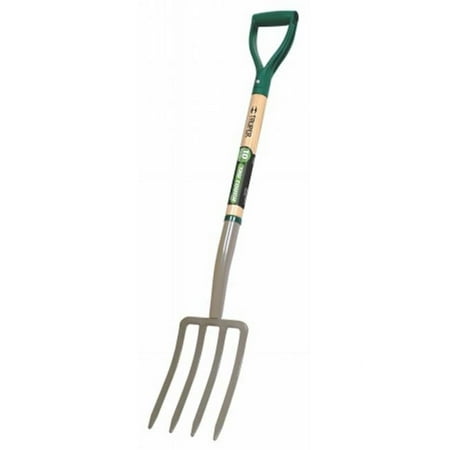How to fix a muddy lawn – 3 ways to boost drainage and prevent pooling, as recommended by lawn experts
Stop your lawn from becoming a muddy mess with this pro advice
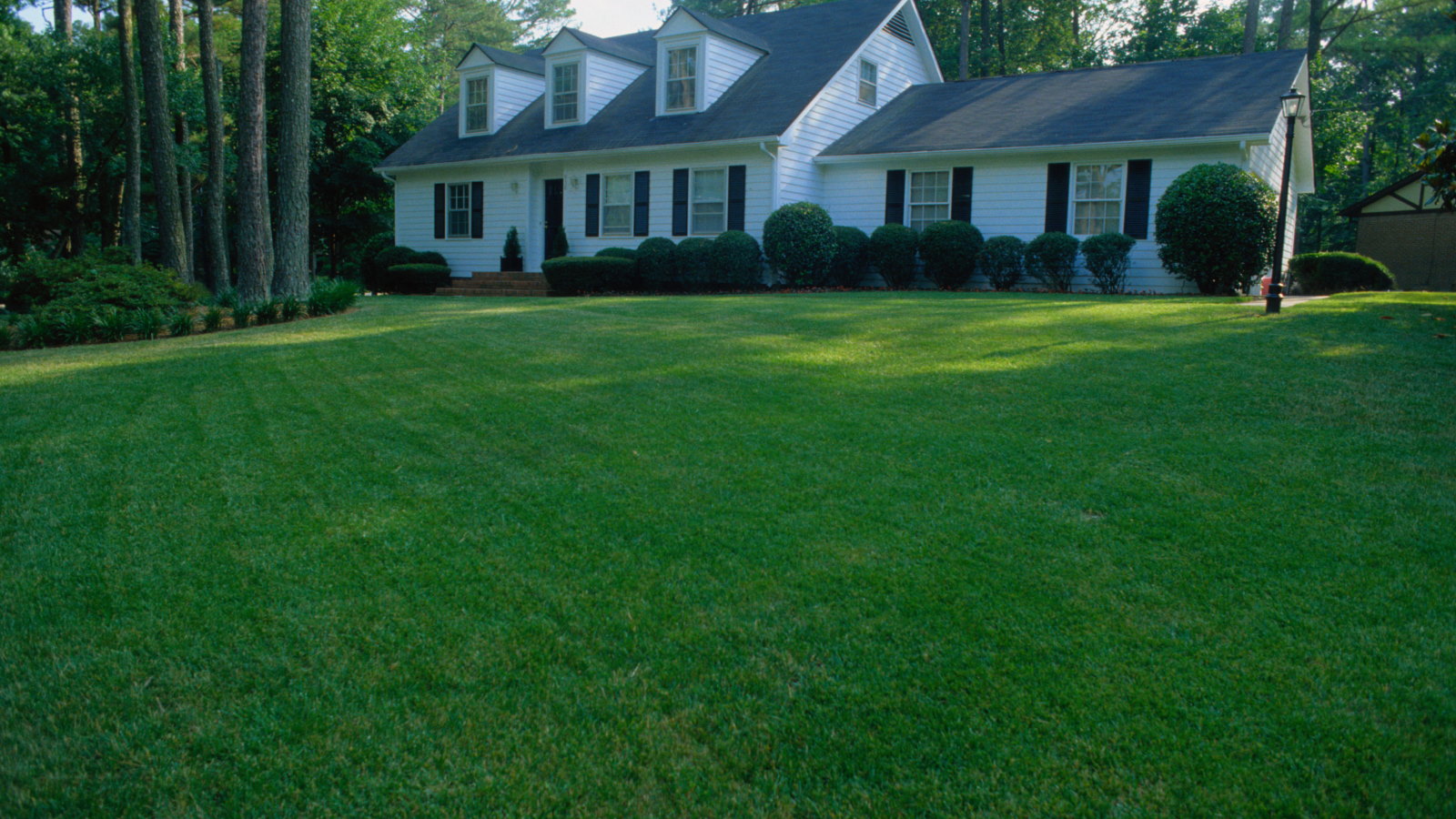
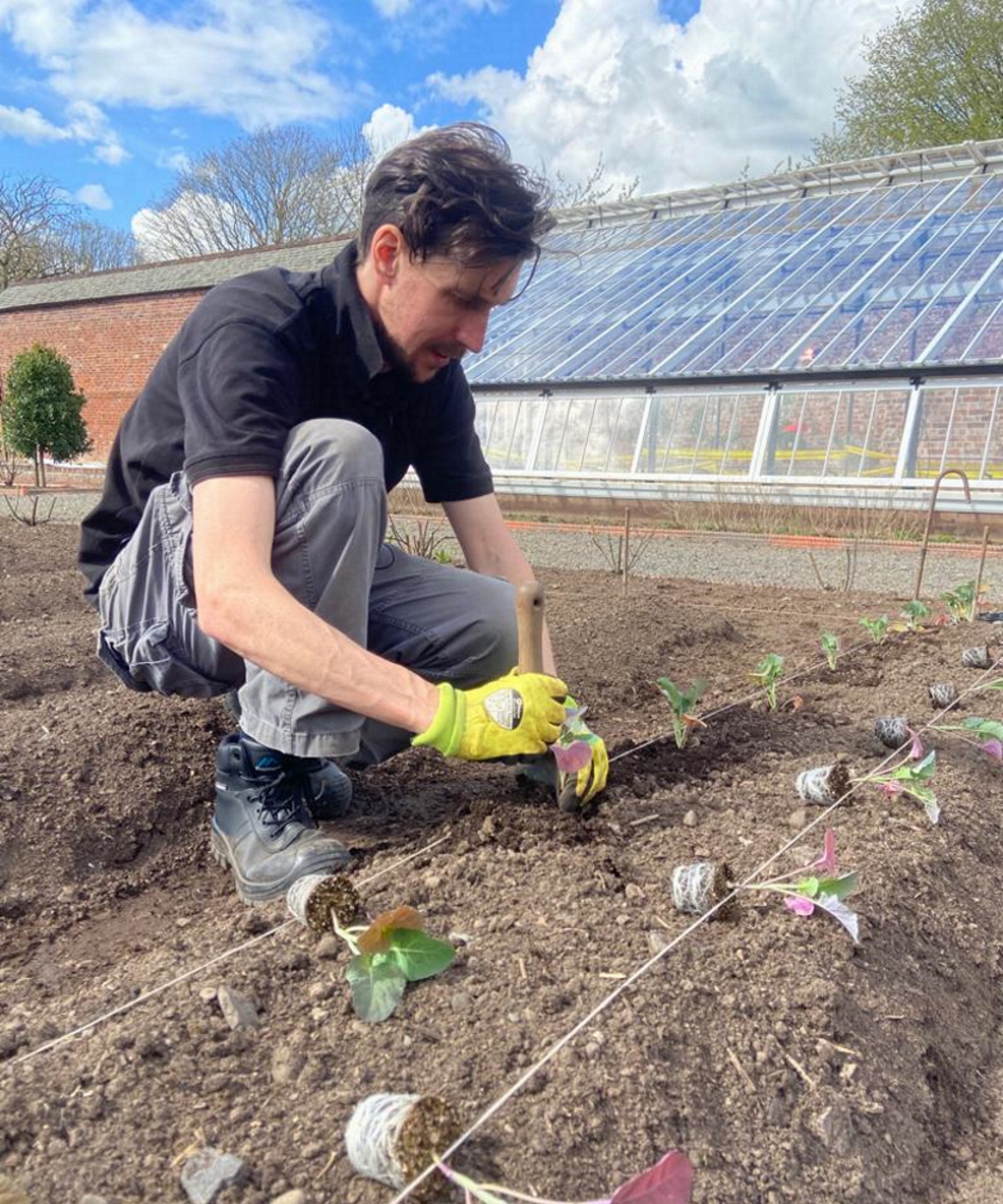
A muddy lawn is an eyesore and an irritation. Caused by poor drainage and heavy rainfall or snow, a lawn can become a quagmire that makes your grass unusable. If you have seen your grass turn into such a mess, there are steps to fix a muddy lawn and prevent it from becoming an issue again.
Fixing a muddy lawn means sorting out the root cause of the problem, which is poor drainage. There are ways to prevent excess water from pooling on a lawn, such as aerating the soil, ensuring it is level, and installing permanent drainage solutions.
To help you learn how to fix a muddy lawn, I spoke to some experienced lawn professionals to reveal the best solutions to your drainage problems. From simple lawn care tasks that make a difference to larger installations, we look at the options available.
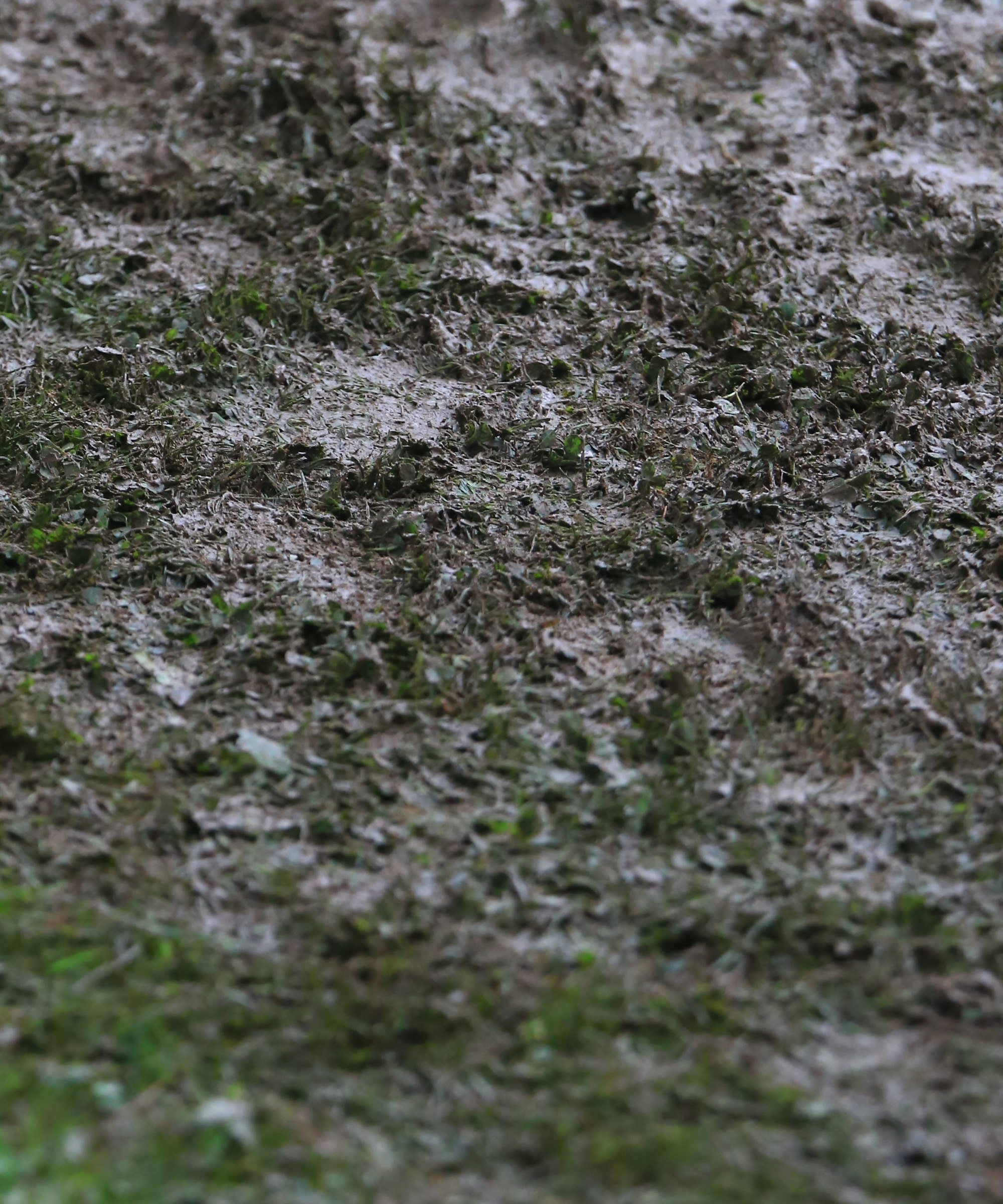
What causes a muddy lawn?
A muddy lawn can be frustrating, and Steven Corcoran from Lawn Love highlights two key contributing factors which usually combine to cause the problem.
‘The two causes, which often happen in the same areas, are poor drainage and a lack of strong plant growth to keep the ground in place,’ explains the lawn expert.
‘Soggy areas are going to kill off plants that won’t tolerate wet conditions, leading to mud pits.’
The underlying cause tends to be poor drainage due to compacted soil or a heavy soil type, and the issue comes to a head during the wetter months of the year. Soil compaction is often caused by machinery, but can also occur from heavy footfall from people and pets.
The soil’s structure gets compressed, so it does not drain water effectively. Combine that lack of drainage with bare patches in the grass, and the result is a muddy, messy lawn. If you have a heavy clay soil, it is particularly prone to compaction and will hold lots of moisture, which turns to mud.
Other contributing factors to a muddy lawn include sloping lawns or low areas, where water collects and pools during heavy rainfall rather than draining away, and downspouts that drain directly onto a lawn.
The following measures are three expert-recommended ways to fix a muddy lawn:
1. Aerate the soil
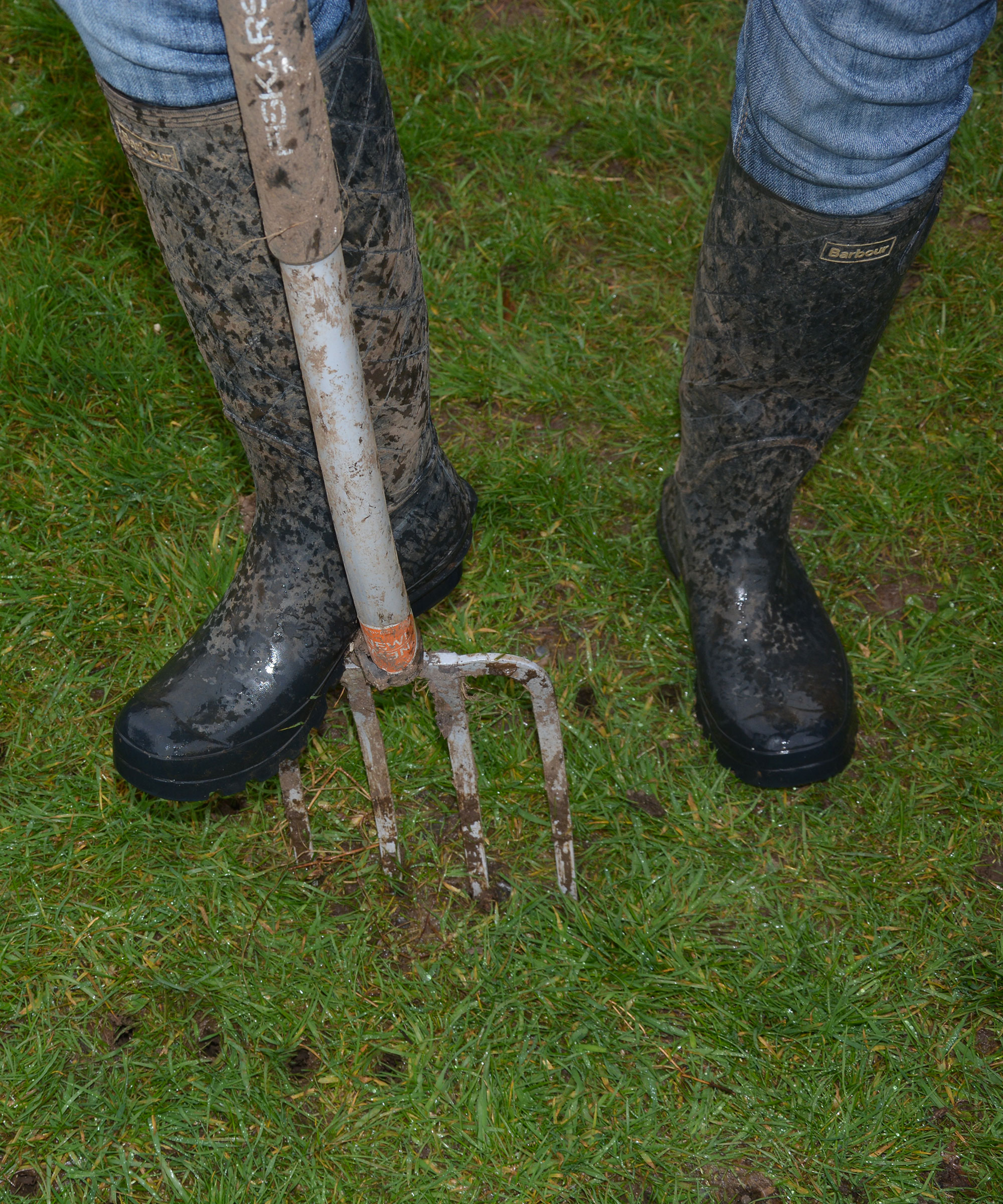
Boosting soil drainage is the best starting point for fixing a muddy lawn and preventing it from becoming an annual issue. The two key ways to achieve this are aerating and dethatching a lawn.
‘The number one recommendation I’d normally make to improve lawn drainage is aeration - drainage is a problem when the soil is too compacted to allow the water to drain off, so, by aerating, this helps increase airflow to the soil and allows water to penetrate the soil and drain off,’ says Chrissie Handley from Online Turf.
‘You can do this easily by poking holes across the lawn with a garden fork and it's a quick, easy way to immediately see your lawn drainage improve.’
Dethatching removes dead material and moss from the surface and helps water penetrate the soil. Aeration and dethatching are jobs to do once a year. They are best done as spring lawn care tasks, but can also be done as part of any fall lawn care routine.

Chrissie Handley is a Lawn Care Specialist providing tailored advice on laying, maintenance and general lawn care for Online Turf.
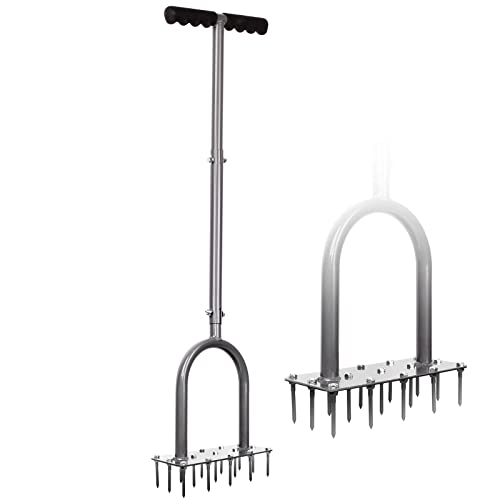
This practical tool for aerating lawns has 15 sharp tines, each 2.3 inches long. It makes aerating quick and easy, plus the 34.6-inch handle reduces back strain.
2. Level the lawn
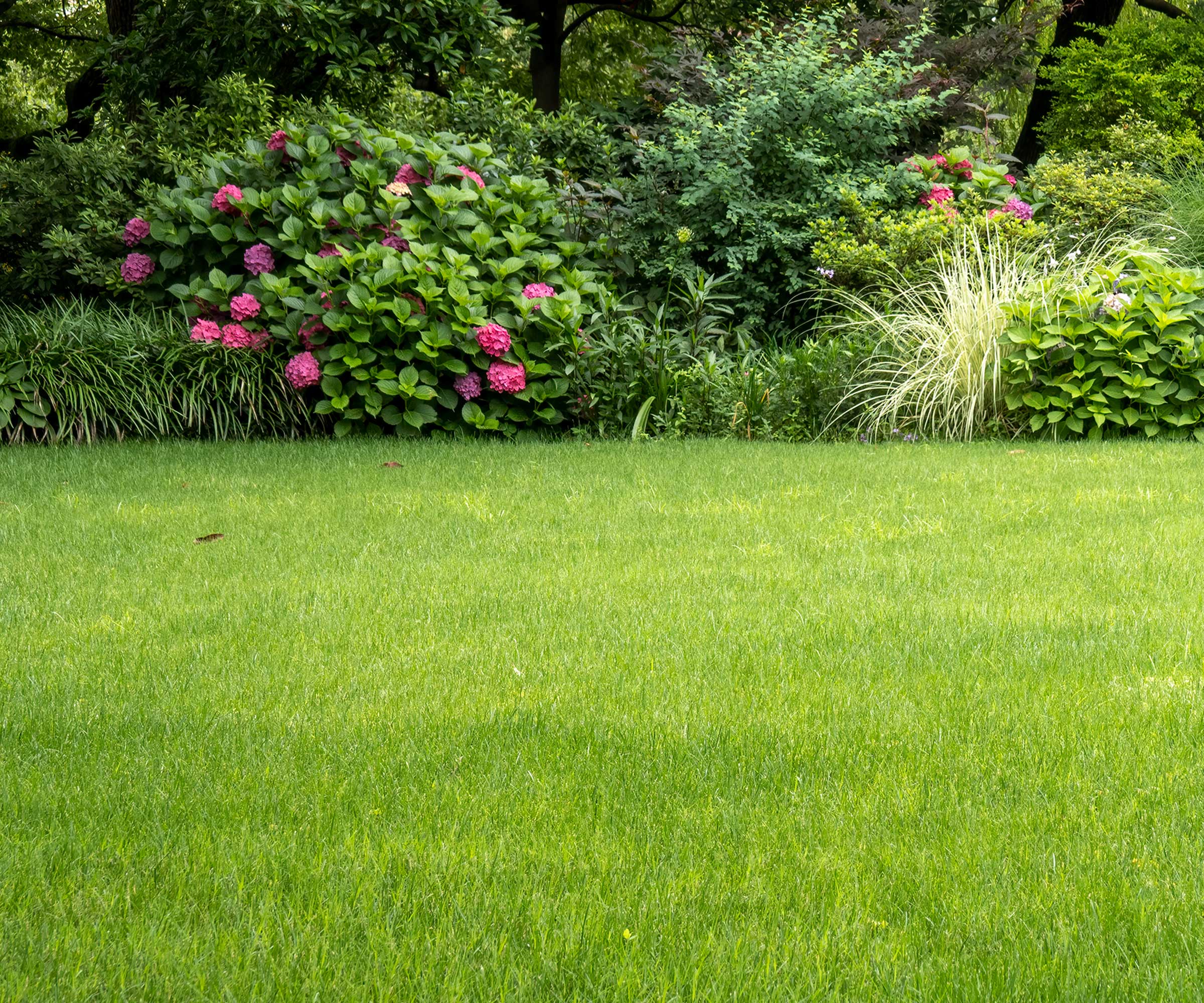
‘The best methods for improving lawn drainage are levelling low spots and proper grading,’ claims Mark Marino, owner of Lawn Phix. ‘Any areas that pool and allow still-standing water will only get worse over time.’
Taking steps to level a lawn will prevent muddy spots where water tends to pool. Minor bumps or dips can be filled by top dressing the affected areas with a mix of 40% sand, 40% topsoil, and 20% compost and then planting grass seed a few days later.
Larger sunken sections may require the turf to be lifted and the ground filled with a sand and topsoil mix. Lay the turf back on top once the level is correct.
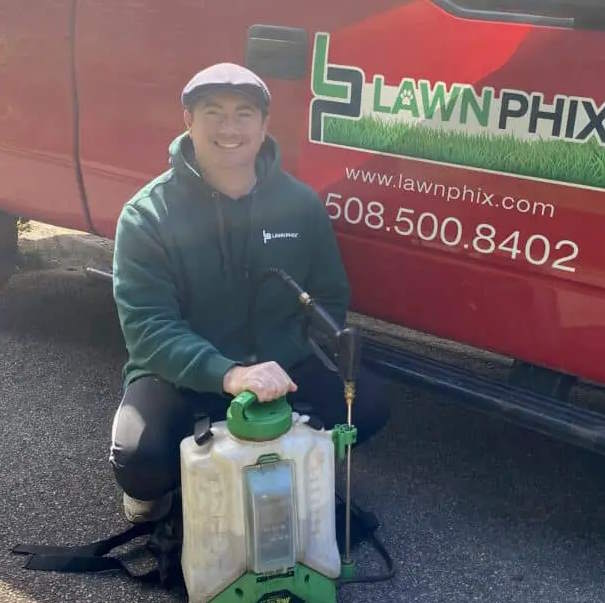
Mark Marino is the owner and operator for Lawn Phix in the state of Massachusetts. He is passionate about nurturing soil health and optimizing turf nutrition, creating an ideal environment for grass to thrive
3. Install a French drain
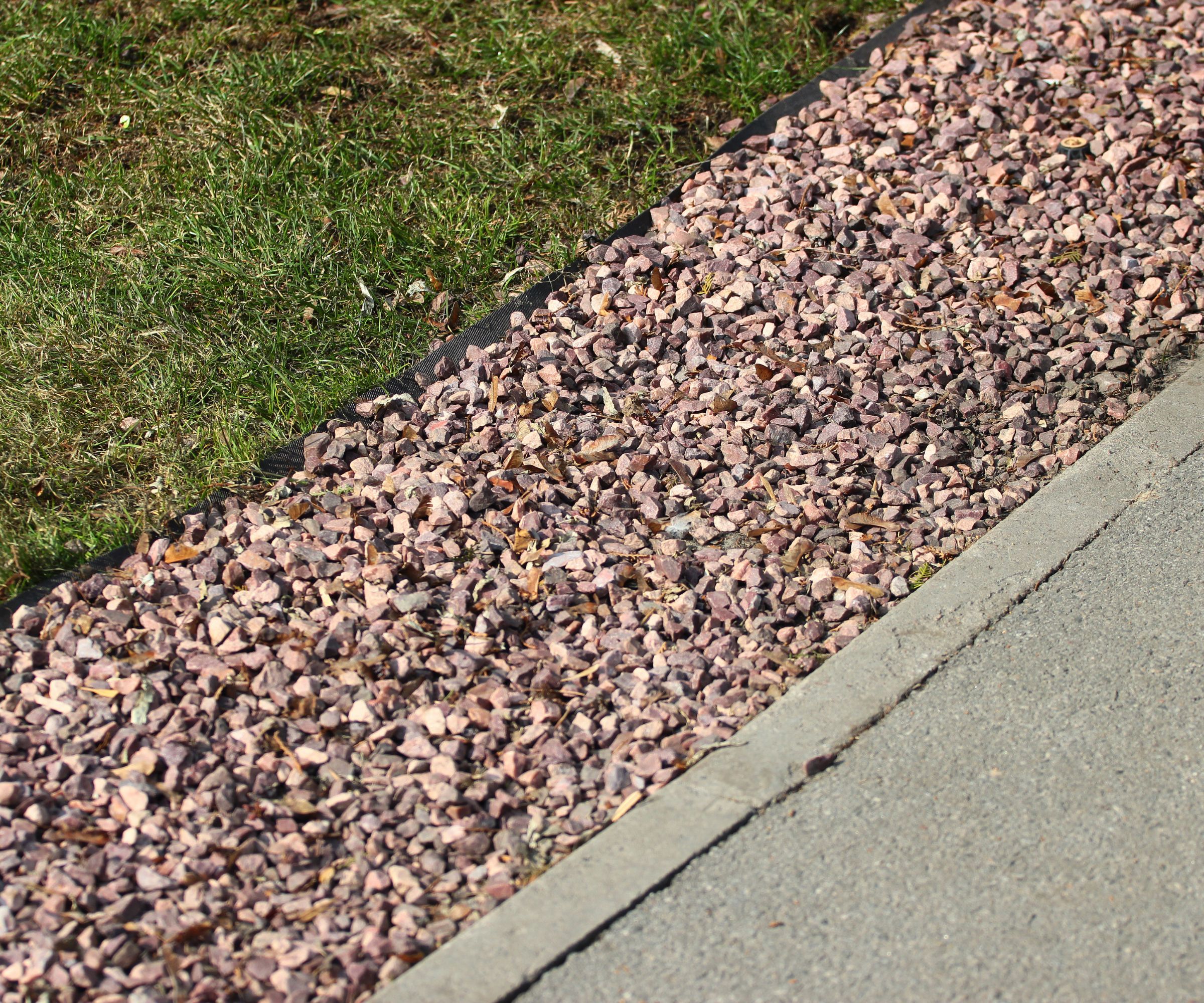
Adding a more permanent drainage solution, such as a French drain or a soakaway, can help to guide water away from flooding your lawn and turning it into a muddy mess.
French drains are a popular way to improve garden drainage. It is a narrow channel or trench that holds a perforated pipe and is backfilled with gravel. The perforated pipe means water can enter at any point and be directed elsewhere. It is recommended that professionals install a French drain rather than attempt to make your own DIY lawn drainage fix.
A soakaway differs from a French drain and soaks water deep into the soil to reduce pooling. It can improve drainage and prevent waterlogging, but it is a more expensive option than French drains or other alternatives, such as building a dry creek or creating a swale.
FAQs
How do I get rid of mud in my lawn?
A muddy mess can be difficult to control, but there are options for short-term solutions that can make a difference.
Rivkah Topas, the vice president of Y&L Landscaping & Tree Service, recommends: ‘There are some temporary solutions to control mud, like spreading straw or woodchips to absorb the water and provide a quick cover to the muddy area.’
It is also recommended to avoid walking on a muddy lawn to prevent worsening the build-up of mud.
If you regularly have issues with waterlogging, why not consider creating a rain garden to solve those woes?
A rain garden is an area of the garden set aside to absorb excess rainwater, preventing it from causing damage to lawns or flower beds. Perennial moisture-loving flowers and grasses can thrive in such an environment, making a rain garden both beautiful and practical.
Sign up to the Homes & Gardens newsletter
Design expertise in your inbox – from inspiring decorating ideas and beautiful celebrity homes to practical gardening advice and shopping round-ups.

Drew’s passion for gardening started with growing vegetables and salad in raised beds in a small urban terrace garden. He has worked as a professional gardener in historic gardens and specialises in growing vegetables, fruit, herbs, and cut flowers as a kitchen gardener. That passion for growing extends to being an allotmenteer, garden blogger, and producing how-to gardening guides for websites. Drew was shortlisted for the New Talent of the Year award at the 2023 Garden Media Guild Awards.
You must confirm your public display name before commenting
Please logout and then login again, you will then be prompted to enter your display name.
-
 I'm an expert vacuum tester, and no, you really don't need a mattress vacuum – here's what to use instead
I'm an expert vacuum tester, and no, you really don't need a mattress vacuum – here's what to use insteadBefore investing in a new gadget, the tried-and-true methods still work
By Dan Fauzi
-
 Charli XCX's front door color 'feels deliberate, and almost calculated' – estate experts say it carries authority (but it comes with a warning)
Charli XCX's front door color 'feels deliberate, and almost calculated' – estate experts say it carries authority (but it comes with a warning)The singer's sophisticated front door color gives a 'psychological head start' to sellers, but it has a potentially unlucky downside
By Megan Slack
